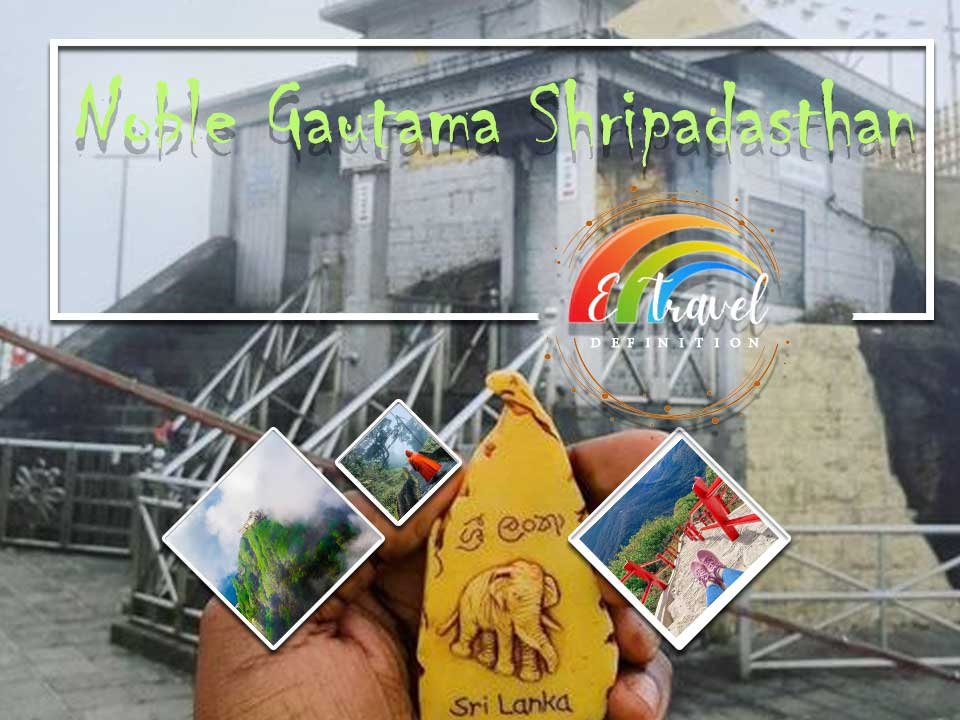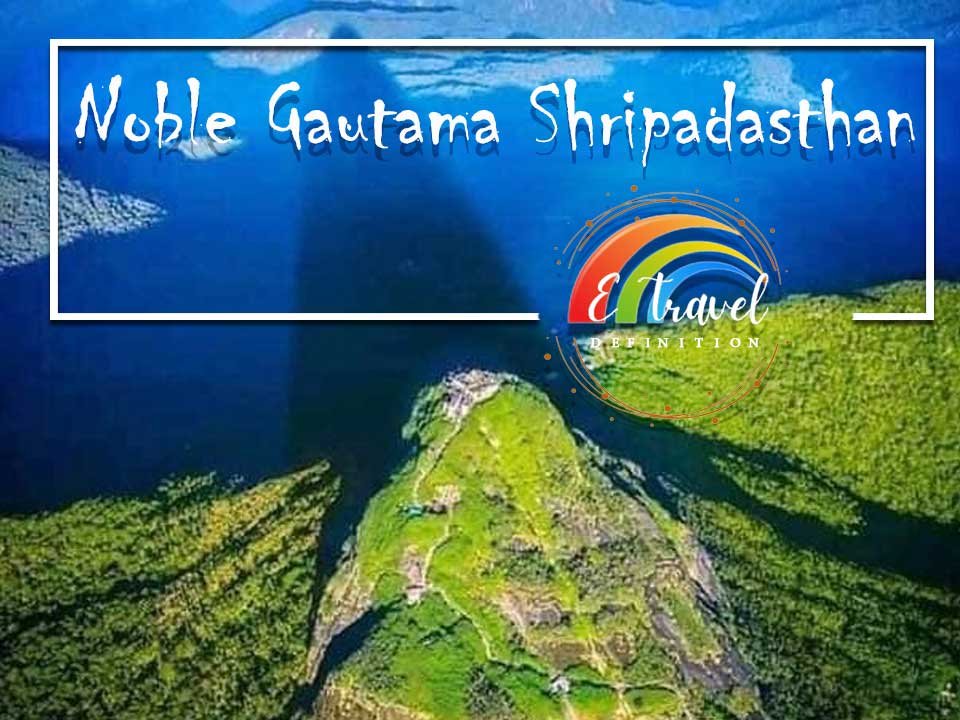Noble Gautama Shripadasthan – Beautiful heaven on earth,
The period from Vesak Poya (May Poya) to Uduvap (December Poya) is known as Siripa Avara. During this period, Siripa area is at zero population level. The Hatton-Nallathanniya road can be named as the main road used for Siripa Pilgrimage. A public transport user from Colombo can travel to Hatton by bus or train. If you take the 8.30 pm mail train from Colombo, you can get off at Hatton railway station at around 2.15 am. There may be more delays due to various difficulties on the upland railway. Third class ticket is Rs.360.

In season, you can take a bus to Nallathanniya from Hatton station, but in off-season, the first bus to Nallathanniya is from Hatton bus stand at 6.45 am. If you are going by private vehicles, you can go to Nallathanniya itself. The Hatton-Nallathanni route passes through tea estates, with beautiful views of reservoirs and mountains in the distance. Castlereagh Reservoir can be seen on the south side from Hatton to Maskeliya.
While going from Maskeli to Nallathanniya, you can see Maussakale Reservoir on the left side and Mohini Falls on the right side.
If you go this way, go early in the morning at sunrise. At that time, you can look after the beauty of this side.
If you are going in a private vehicle, you can stop at these places and see the beauty. The 6.45am bus goes to Nallathanni at around 8.15am. From there you can have breakfast and start your pilgrimage to Siripada.
Buy the things you need from Nallathanni during the off-season because the shops above are closed during the off-season.
If you can get it from Hatton, it would be great. Bring back the trash you carry without harming the natural environment.
From the Dragon Pantheon (“Makara Thorana”) to Siripa Uda Maluwa

The distance from Nallathanni to Siripa hill is about 7km. On the way from Nallathanni to Udamaluwa, Makara Thorana (Dragon Pantheon), Sama Pagoda, Seetha Gangula, Rathu Ambalama, Idikatupahana, Mahagiridambaya, Ehela Kanuwa and Ahasgawwa can be identified as special places.
There is a steep climb from Mahagiridamba to Udamaluwa. The shop at the last and highest point on Siripada is near the Ehelakanuwa. If it is a clear day, you can visit Siripa Udamalwa and see the surrounding mountains clearly. You can reach Nallathanni from Udamaluwa in almost 3 hours.
In off-season, the last bus from Nallathanni to Maskeliya is at 4.45pm. You can take a bus from Maskeliya to Hatton at around 6pm.
During the season, there is a special bus service for those going to Siripada.
Available Routes for Siripada Pilgrimage

There are about six routes for the Siripada pilgrimage, but most people make the pilgrimage through three main access routes.
- Hatton – Nallathanniya road
- Ratnapura – Palabaddala road
- Kuruwita – Eratna road
At present, most people do the Siripada pilgrimage along the Hatton-Nallathanniya route. The reason for this is that the journey is easier and shorter. However, the Ratnapura-Palabaddala road and the Kuruwita-Eratne road are unique both historically and due to legends.
Travelers coming through Hatton can reach Nallathanniya via Hatton town and start climbing Siripada hill.
Travelers traveling on the Ratnapura route can reach Ratnapura and Palabaddala on the Palabaddala route and start climbing Mount Siripa.
Pilgrims traveling on the Kuruvita route begin the Siripa pilgrimage through the Kuruvita Eratna.
Take these routes and do not pollute the sacred ground by littering! Leave only your footprints.
History of the Siripada Pilgrimage
Mount Sripada is located in the central highlands of Ratnapura district in Sabaragamuwa province. It is about 2243 meters high. Sripadasthan is a sacred place of pilgrimage for Buddhists. The area around Mount Sripada is surrounded by large mountain ranges. Animals such as elephants, tigers, as well as monodemic species live there.
Mount Sripada can reach by about 6 routes,
- Ratnapura-Palabaddala road
- Hatton-Nallathanni road
- Kuruvita-Eratna road
- Muryawatta road
- Mookuwatta
- Malimboda road
Out of these 6 routes, Nallathanni and Palabaddala routes are very famous. Although there are three routes starting from the base of the mountain, Palabaddala and Eratna route become one route from Haramitipana.

In all these three routes, we will meet Shitagagula separately and the places like Getthampana, Indikatupana, Mahagiridambaya, Ahasgawwa make the route beautiful.
2243 meters (7360 feet) above sea level, the Siripa site near Samanolakanda is an ecologically priceless watershed located in a wide area that connects Ratnapura District in Sabaragamu Province and Nuwara Eliya District in Central Province.
This Siripa mountain range is like Mother Nature who creates a birth for the four great rivers (Mahaweli, Kelani, Walawe, Kalu) which are able to give life to the entire Sri lanka.
This wonderful creation of nature turned into a sacred holy land worthy of pilgrimage by the touch of the Lord Buddha’s lotus feet.
Since then, devoted people from small children to elderly people bravely face the challenge of doing Siripa Karuna by climbing this great mountain peak because the Siripa lotus sign is capable of cultivating the mental strength that surpasses physical strength.
Ending the off season and starting the season!
Sri Padasthan is the Siri Pathula located at the top of Samanala Mountain and the Buddhist shrine built in its vicinity. The Buddha’s left Siripa sign is established there.
Siripada Pilgrimage begins every year on Uduwap Poho (December Poya-day) and ends on Vesak Poho (May Poya-day). There are traditional practices associate with climbing Mount Sripada. The pilgrim who climbs Sripada for the first time is called “Kodukaraya” and he has to bathe in the stream called “Sita Gangula”. Needles and threads are fixed at the place known as “Edikatu paana”.

After climbing the hill, they ring the bell according to the number of times they have visited Sripadasthan. The intention of the Sripada pilgrim is to climb the mountain before sunrise. People call this “Era Sewaya” and watching the sunrise at the top of the mountain is an unforgettable experience. People call this “Sun Service” and watching the sunrise at the top of the mountain is an unforgettable experience. Sunlight falls on the top of the mountain and casts a triangular shadow on the surrounding plains.
As the sun rises, it appears as if the sun is emerging from the middle of the cloud layer. It is known as “Era Sewaya”.
Siripada Kodu Rituals (“Siripa Kodu charithra”)

Pilgrimage to Siripa is a very special experience. Buddhists climb Samanala Kanda to worship Buddha’s left Sri Pada Padmaya or Paribogika Dhatu. Throughout this journey, there is a culture that is unique to Siripa Pilgrimage, which is very interesting. There is no religious difference. There is no racial difference. Even if you are a non-religious person, it is a very beautiful experience to carry out these Siripa Kodu rituals. Because this experience is something that we can’t get anywhere in the world.
The thing that needs to be appreciated is that most of the foreigners who come to Siripa worship knowingly or unknowingly do these Kodu rituals with great pleasure. It was a strange experience for them.
All those who climb Mount Siripa kindly make Sripadasthan a polythene free zone.





